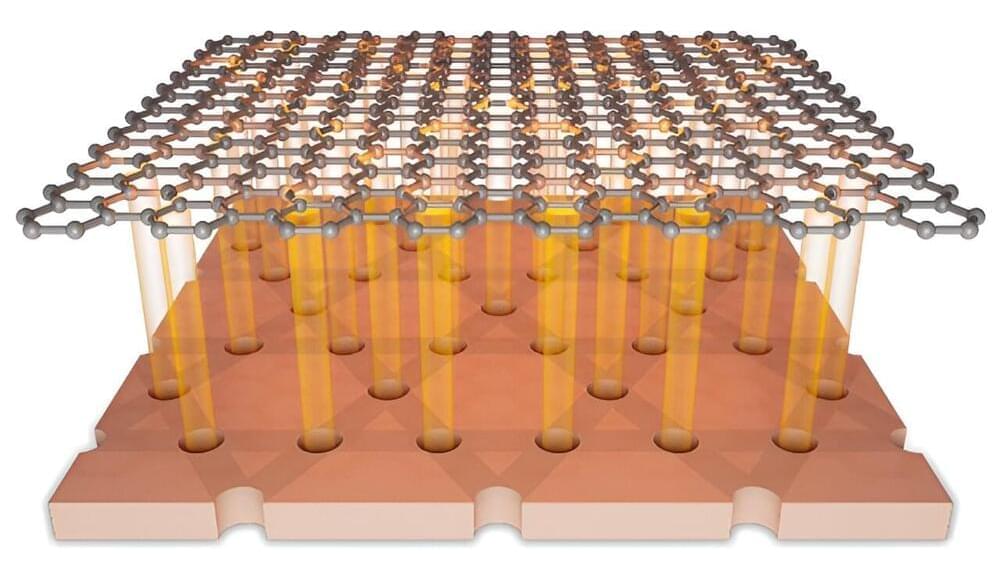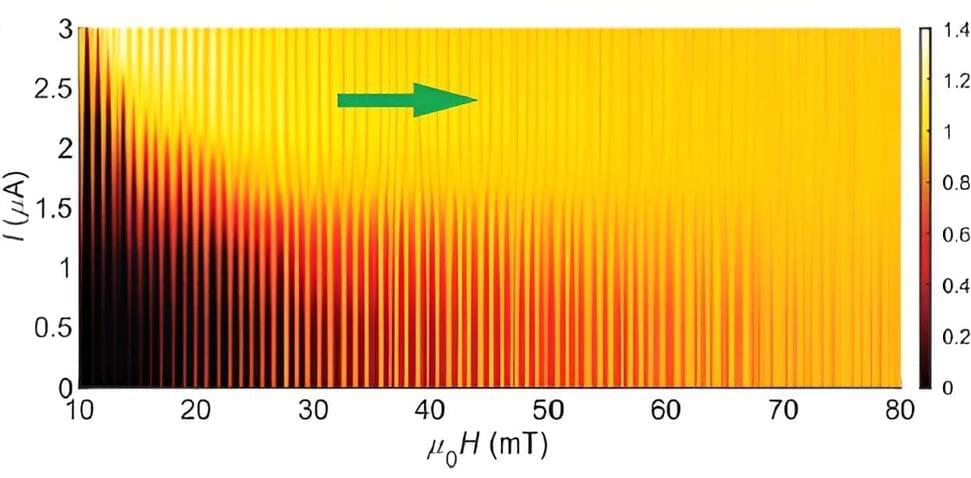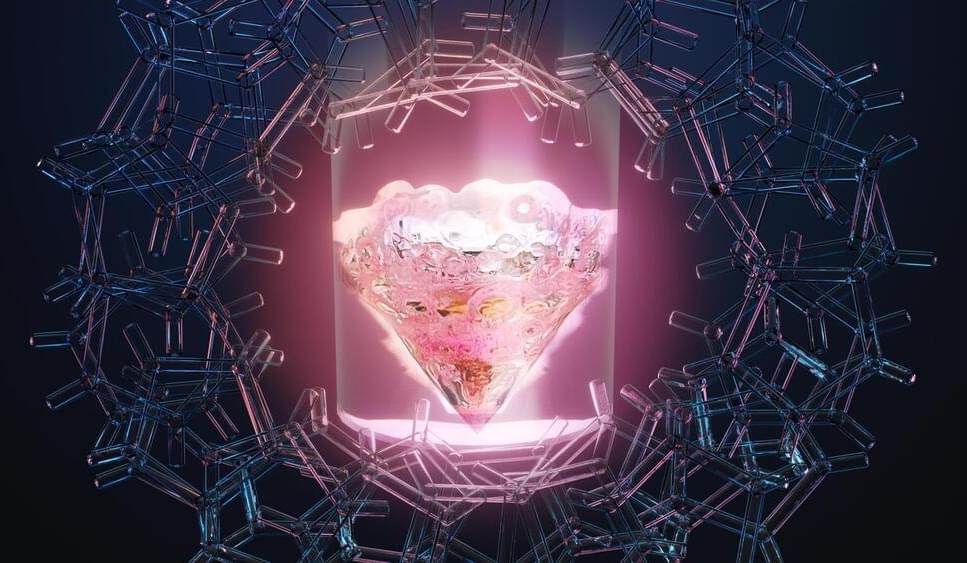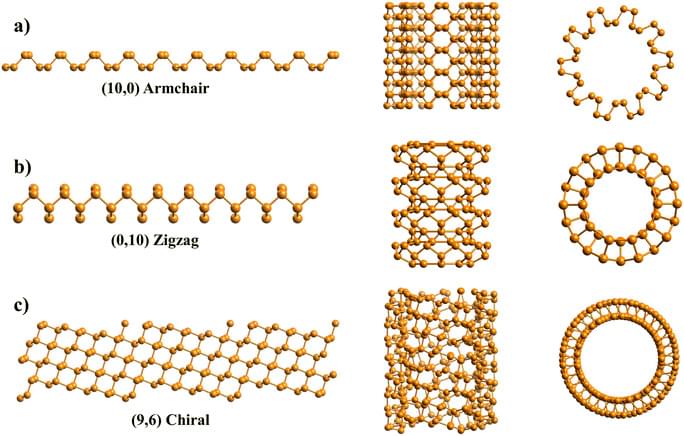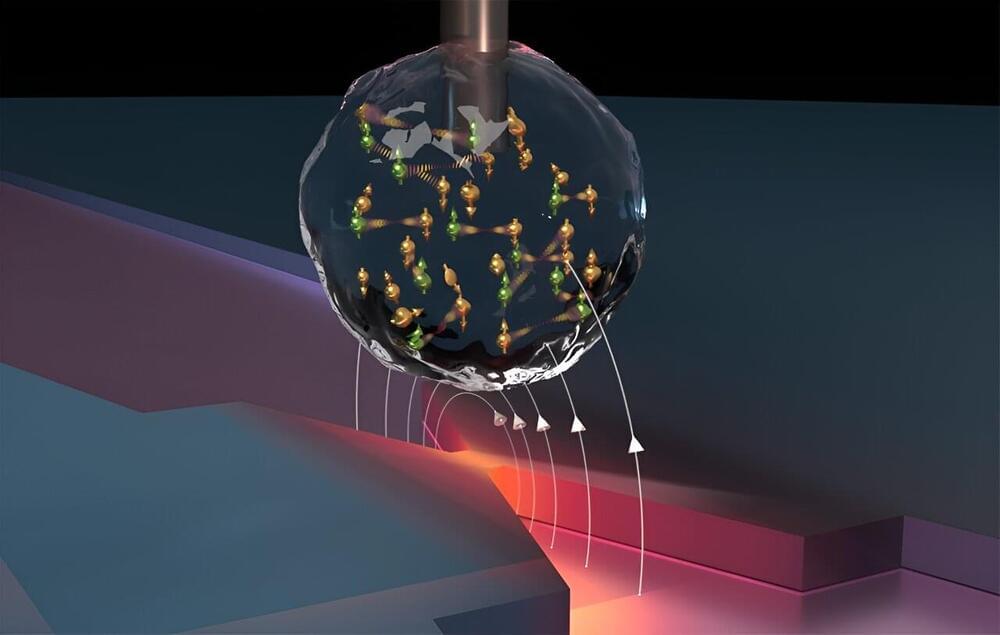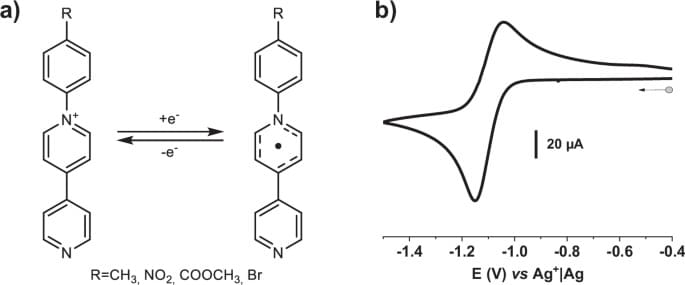A research team has introduced a novel method for selectively tuning electronic bands in graphene. Their findings, published in Physical Review Letters, showcase the potential of artificial superlattice fields for manipulating different types of band dispersions in graphene.
Category: materials – Page 26
Topological materials are materials that have unusual properties that arise because their wavefunction—the physical law guiding the electrons—is knotted or twisted. Where the topological material meets the surrounding space, the wavefunction must unwind. To accommodate this abrupt change, the electrons at the edge of the material must behave differently than they do in the main bulk of the material.
Kagome metals exhibit superconductivity through a unique wave-like distribution of electron pairs, a discovery that overturns previous assumptions and may lead to the development of novel superconducting components.
This groundbreaking research, driven by theoretical insights and enhanced by cutting-edge experimental techniques, marks a significant step towards realizing efficient quantum devices.
For about fifteen years, Kagome materials with their star-shaped structure reminiscent of a Japanese basketry pattern have captivated global research. Only staring from 2018 scientists have been able to synthesize metallic compounds featuring this structure in the lab. Thanks to their unique crystal geometry, Kagome metals combine distinctive electronic, magnetic, and superconducting properties, making them promising for future quantum technologies.
A team of scientists led by the U.S. Department of Energy’s (DOE) Oak Ridge National Laboratory (ORNL) recently made an unprecedented observation of how promethium, a rare element, forms chemical bonds in aqueous solutions.
This groundbreaking discovery was made using the Beamline for Materials Measurement (BMM), a beamline funded and operated by the National Institute of Standards and Technology, at the National Synchrotron Light Source II, a DOE Office of Science user facility at DOE’s Brookhaven National Laboratory.
José M. de Albornoz-Caratozzolo  and Felipe Cervantes-Sodi
and Felipe Cervantes-Sodi 
Universidad Iberoamericana, Physics and Mathematics Department, Prol. Paseo de la Reforma 880, Lomas de Santa Fe, Ciudad de México, Mexico. E-mail: [email protected]; Tel: +52 55 59504275.
Received 5th May 2023, Accepted 30th September 2023.
Researchers at Argonne have developed an innovative technique that creates “fingerprints” of different materials that can be read and analyzed by a neural network to yield previously inaccessible information — https://bit.ly/3LCklZw.
The goal of the AI is just to treat the scattering patterns as…
Study shows how materials change as they are stressed and relaxed.
Hoque, M.A., George, A., Ramachandra, V. et al. All-2D CVD-grown semiconductor field-effect transistors with van der Waals graphene contacts. npj 2D Mater Appl 8, 55 (2024). https://doi.org/10.1038/s41699-024-00489-2
Meissner Effect
Posted in materials
A permanent magnet begins to hover above a ceramic material as it cools and transitions to a superconducting state; the magnet remains aloft until the ceramic warms above a critical temperature.
The ceramic material is a 25mm disc of yttrium barium copper oxide (YBa2Cu3O7, also commonly referred to as \.
Dynamic nuclear polarization (DNP) has revolutionized the field of nanoscale nuclear magnetic resonance (NMR), making it possible to study a wider range of materials, biomolecules and complex dynamic processes such as how proteins fold and change shape inside a cell.
Metal organic frameworks (MOFs) on a bipyridinium basis can be excellent candidates to observe an ET due to their structural arrangement. Recently, Guo et al.12 reported a 2D semiconductor MOF composed by π-stacked redox active N-methylpyridinium cations, sandwiched by cyanide-bridged layers that shows light and temperature-induced color change with the formation of stable radicals even in an ambient atmosphere. In this case, the observed thermo-and photo-activated ET within these materials involves the pyridinium unit as acceptor and the uncoordinated CN- moiety as donor. These MOF structures are closely related to Prussian blue and/or Hofmann clathrate derivatives which offer excellent structural platforms to establish multifunctionality, due to their intrinsic magnetic properties: photomagnetism, magnetic ordering, valence tautomerism and/or a spin crossover (SCO)22,23,24,25,26.
In general, Hofmann clathrates are formed by three major building blocks, first off, aion metal center, second, a ligand (L) and lastly, a cyanometallate anion [M(CN)x]n– (x = 2 or 4, n = 1 or 2). Usually, this combination affords 2D planar metal−cyanide−metal sheets completed by a mono-or bidentate neutral organic ligand L, most often ammonia27, pyridine2830,31,32, triazole33,34,35,36,37 or pyrazine38,39,40 derivatives, with a general formula of {Fe(L)x[µ4-M’(CN)4]} (x = 1 or 2; M’= Ni, Pd or Pt) or {Fe(L)x[µ2-M(CN)2]} (x = 1 or 2; M= Cu, Ag or Au)28. The modulation of the ligand field around the iron center through the different units leads to the introduction of the SCO properties. To our knowledge, at least three exceptions to this general formula have been described in literature: i) if the ligand is a strong chelate, for example a quinoline derivative (aqin), 1D chains of [Fe(aqin)2(μ2-M(CN)4)] (M = NiII and PtII) are obtained, where [M(CN)4]2- acts as a bridge between the iron sites; ii) if the ligand is tetradentate, a {[Fe(μ4-bztpy)μ2-Pt(CN)4]·0.5bztpy} structure emerges, where 2D sheets, formed by the ligand and the FeII metal center, are again interconnected by [M(CN)4]2- building blocks42, and iii) very recently, Real et al. described two isomorphous structures, where the ligand carries a positive charge due to a spontaneous protonation during the crystallization process. The authors suggested that the positive charge could be responsible for an additional class of Hofmann-clathrates with the general formula {Fe(L)2[µ2-M(CN)4]}. It should be noted that in all of the above cases, the specific properties (electronic, steric, etc.) of the ligands are responsible for the final structure of these modified Hofmann-type clathrates, which, nevertheless, maintain a SCO behavior. Thus, we think that Hofmann-type clathrates offer an excellent structural platform to establish multifunctionality through introduction of a redox-active ligand, such as a bipyridinium-type derivative.
In this work, we explore this idea by synthesizing a large family of non-innocent ligands, which contain three functional building blocks (Fig. 1a; see Supplementary Figs 1 – 5 for characterization), the most important being a monocationic pyridinium unit that is responsible for the redox activity12,44,45,46,47. Attached to it, an aryl group allows for the fine-tuning of the delocalized electron density of the ligand by modifying the substituent R in para position. Lastly, a pyridine group is added to ensure the coordination to the iron center. The pyridinium moiety contains an electropositive, quaternary nitrogen atom that can be reduced to the highly air-sensitive neutral (radical) species (Fig. 1b). As demonstrated through several examples in the literature, the stability of the radical state can be largely improved by e.g. incorporating it in a MOF structure. In the case of the compound reported by Guo et al.12 the stabilization of the radical is due to π−π and cation-π interactions within the network. With this idea in mind, the abovementioned redox-active ligands were used to synthesize a family of Hofmann-type MOFs, which, as we show below, host a wealth of electronic phenomena, including both SCO and ET processes as well as redox activity…
